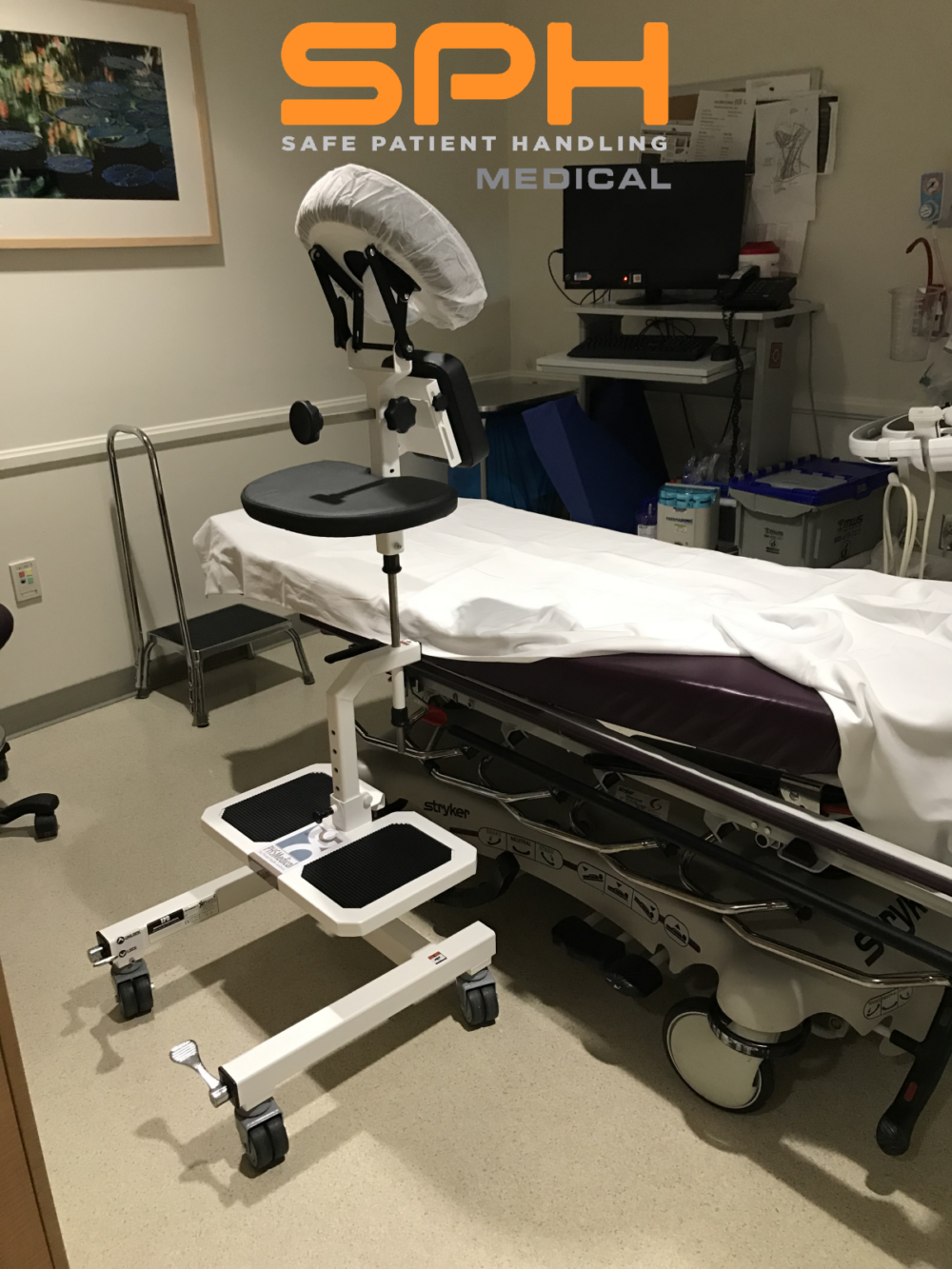Current Epidural Trends in Hospitals and the Epidural Chair
Now more than ever in Labor and Delivery departments and in General Surgery areas the trend is to utilize the Epidural Chair to improve patient comfort and safety. Equally important is the opportunity to improve safety for nursing and Anesthesia staff. It is well known that the experience of childbirth is extremely painful for the mother. Modern medicine has advanced to provide mothers with epidural anesthesia for pain during labor. Epidural pain relief can make the child birthing experience less traumatic and exhausting for the mom. Epidural anesthesia depends on the technical abilities of the anesthetist. This requires assessing the risks that are present for the patient, positioning the patient for safe administration, and gathering the necessary staff to help with positioning. An often overlooked factor in patient outcomes in regard to pain relief is the ergonomics that nurses must respect during patient positioning to prevent themselves from developing musculoskeletal injury from repetitive patient positioning over their career. We will discuss these points in this article.
Proper positioning of the patient for safe and effective epidural pain relief can be understood with respect to the anatomy of the spinal column. The spinal cord is protected by the vertebral column. When a patient flexes their core, the posterior vertebral column spinal processes spread apart, allowing direct access to the dural sac that covers the spinal cord for anesthesia administration. Often, the nursing staff must help the patient remain in a still-flexed position to allow for safe administration. Depending on the patient’s body habitus, it can be difficult for nursing staff to hold the patient without compromising their own ergonomics. Patient positioning during administration of spinal anesthesia is very important. EPD, commonly known as an epidural chair, has been implemented to help place patients flexed, allowing for effective anesthesia delivery. The epidural positioning chair also doesn’t require nursing staff to put their bodies in stressful contortions, minimizing musculoskeletal injuries in the workplace.
Epidural pain relief is often significant to some expecting moms as they fear the pain during labor. Although it is a commonly performed procedure, epidural anesthesia does not come without its risk. Because the medication is being delivered near the dural sac and spinal cord, there is a risk of medication being administered within the dural sac. Risks seen during epidural anesthesia include a severe drop in blood pressure. Other side effects include difficulty urinating, nerve damage, nausea, vomiting, and infection.
Prevent Injury to the Spinal Cord
Injury to the spinal cord can also occur, with paralysis being a possible outcome. It is essential to understand these risks to help minimize negative outcomes. The Epidural chair helps decrease this risk by allowing the patient to be put in a fixed position that won’t disturb the anesthetist. Safety and reliability are of utmost importance in healthcare, and the EPD can provide proper positioning with adjustments in respect to the patient’s body habitus. Although there are many factors that go into the safe delivery of anesthesia, the utilization of an epidural chair can help mitigate the risk with respect to the proper positioning of the patient.
EPD can be used outside of the labor and delivery floor. With respect to spinal blocks and spinal taps, the chair is used because both procedures require the exact positioning. Spinal taps come with similar risks and can be mitigated similarly with the use of the chair. Often time patients who may need a spinal tap for therapeutic or diagnostic purposes must have a risk assessment which includes the ability to position the patient properly. In the pediatric population, a chair is not as helpful as children often require some form of sedation to help with patient positioning because of their age. In the adult population where body habitus is varied, an EPD chair that can be adjusted to reproduce the same position can help improve patient outcomes.
The Epidural Anesthesia
Epidural anesthesia can also be used to supplement general anesthesia for surgery and to help with pain alleviation during post-operative recovery. Surgeries that occur in the lower extremities can often be excruciating in the post-operative recovery period. Supplemental pain relief can help the patient feel more comfortable, and reduced pain perception can help a patient recover faster by complying with post-operative therapy. The utilization of an Epidural Positioning Device can help mitigate a safe and quick administration of a spinal block even in spite of staff not being able to be present for patient positioning. This kind of anesthesia helps reduce the usage of opioids for patients who refuse or patients with a history of opioid abuse.
Overall The utilization of an epidural positioning chair can help deliver safe and reliable anesthesia while reducing the risks of the procedure, the requirement of staffing, and the risk of musculoskeletal injuries. This chair can be utilized in similar procedures such as the spinal tap or even thoracentesis, which shows promising application outside of just epidural anesthesia. This trend to improve patient and staff safety using the EPD is increasing. Word is spreading in clinical circles that the simplicity and ease of use of the EPD drives compliance and therefore reduces risk, a very positive trend indeed.
References:
Comparing Three Different Modified Sitting Positions for Ease of Spinal Needle Insertion in Patients Undergoing Spinal Anesthesia by Sussan Soltani Mohammadi, Mohammadreza Piri, and Alireza Khajehnasiri 2017

